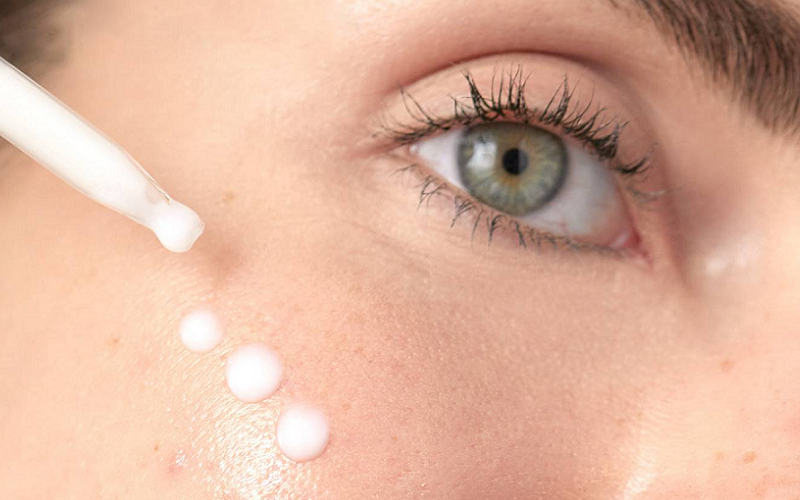
In the dynamic world of skincare, where new trends and ingredients constantly emerge, it’s essential to recognize the true game-changers. One such star ingredient that has steadily risen to prominence is Niacinamide, a powerhouse in the realm of skin health. Despite being a buzzword in beauty circles, many still wonder, “What exactly is Niacinamide, and why is it so revered?” Whether you’re grappling with skin concerns like inflammation, uneven skin tone, or aging, or simply seeking to enhance your skin’s overall health, Niacinamide emerges as a versatile and vital ingredient in your skincare arsenal.
Contents
Introduction to Niacinamide and Skincare
In the ever-evolving landscape of skincare, staying abreast of the latest trends and ingredients is crucial for anyone passionate about maintaining healthy, vibrant skin. Among the plethora of ingredients that flood the market, a select few stand out for their exceptional benefits and versatility. Niacinamide, a form of vitamin B3, has emerged as one of these standout ingredients, gaining acclaim for its wide-ranging positive effects on skin health.
Overview of Skincare Trends and Ingredients
Skincare is an industry driven by both timeless wisdom and innovative breakthroughs. From natural remedies passed down through generations to cutting-edge scientific discoveries, the journey of skincare is rich and diverse. In recent years, a shift towards ingredients that not only enhance appearance but also promote skin health has become apparent. Amidst this shift, Niacinamide has come to the forefront, celebrated for its ability to address multiple skin concerns effectively.
Introduction to Niacinamide as a Key Ingredient in Skincare
Niacinamide, also known as nicotinamide, is not a new discovery in the field of skincare, but its full potential is only now being realized. It is a water-soluble vitamin that works with the natural substances in your skin to help visibly improve enlarged pores, uneven skin tone, fine lines, dullness, and a weakened skin surface. Unlike some skincare ingredients that are suitable for specific skin types or concerns, Niacinamide is remarkably versatile, offering benefits to almost all skin types [1].
Understanding Niacinamide
Niacinamide, often hailed as a skincare superhero, is more than just a passing trend in the beauty world. Its growing popularity is backed by scientific research and real-world results. To fully appreciate the benefits of Niacinamide, it’s crucial to first understand what it is and how it functions.
Definition and Basic Properties of Niacinamide
Niacinamide is a form of Vitamin B3, an essential nutrient that plays a vital role in cellular health. It’s a water-soluble vitamin, meaning it dissolves in water and is not stored in the body, thus requiring regular replenishment either through diet or skincare products. In terms of chemical structure, Niacinamide is an amide compound of niacin (also known as nicotinic acid). Unlike niacin, Niacinamide does not cause skin flushing, making it more favorable for topical application. Its primary functions include improving skin’s barrier function, reducing inflammation, and assisting in cellular repair.
Historical Context and Evolution in Skincare
The journey of Niacinamide in skincare dates back several decades, but its significant impact has been recognized more prominently in recent years. Initially, Niacinamide was explored for its medical properties, particularly in treating pellagra, a disease caused by Vitamin B3 deficiency. Over time, researchers began to uncover its potential in skin health, leading to its incorporation in various skincare products. Today, it’s celebrated for its multifunctional properties and is a staple ingredient in numerous skincare formulations [2].
Scientific Perspective: How Niacinamide Works on the Skin
From a scientific viewpoint, Niacinamide’s effectiveness lies in its ability to improve cellular processes. It aids in the synthesis of ceramides and fatty acids, crucial components of the skin’s lipid barrier. This strengthens the skin’s defense against environmental stressors and moisture loss. Additionally, Niacinamide works to inhibit the transfer of pigment within the skin, which can reduce hyperpigmentation. Its anti-inflammatory properties make it beneficial for acne-prone and sensitive skin. On a molecular level, Niacinamide also boosts collagen production, helping to reduce the appearance of fine lines and wrinkles.

Benefits of Niacinamide in Skincare
Niacinamide has garnered acclaim in the skincare industry not just for its versatility but also for its multitude of benefits. This ingredient offers a broad spectrum of advantages that cater to various skin types and concerns. Understanding these benefits is key to realizing why Niacinamide is considered a skincare staple.
Enhancing Skin Barrier Function
One of the most significant benefits of Niacinamide is its ability to strengthen the skin’s barrier. The skin barrier is the first line of defense against environmental stressors, pollutants, and irritants. Niacinamide helps in the synthesis of ceramides, lipids that are vital for maintaining the skin’s protective barrier. This improved barrier function helps retain moisture, keeping the skin hydrated and resilient, and reduces the impact of external irritants, making it particularly beneficial for those with sensitive or compromised skin [3].
Role in Reducing Inflammation and Redness
Niacinamide is renowned for its anti-inflammatory properties, which make it an excellent ingredient for calming the skin. It is particularly effective in reducing redness and inflammation associated with various skin conditions, including acne, eczema, and rosacea. This soothing effect not only helps in managing these conditions but also contributes to a more even skin tone and texture.
Effects on Hyperpigmentation and Skin Tone
Hyperpigmentation, which includes sunspots, age spots, and melasma, can be a challenging skin concern. Niacinamide addresses this by inhibiting the transfer of pigment within the skin, which helps in fading dark spots and evening out skin tone. Regular use of Niacinamide-infused products can lead to a noticeable reduction in hyperpigmentation, yielding a brighter and more uniform complexion.
Anti-Aging Properties: Wrinkle Reduction and Skin Elasticity
The anti-aging benefits of Niacinamide are profound. It helps boost collagen production, a key factor in maintaining skin’s elasticity and firmness. This action helps reduce the appearance of fine lines and wrinkles, giving the skin a more youthful and rejuvenated look. Furthermore, Niacinamide’s ability to repair and reinforce the skin barrier contributes to overall skin health, which is crucial in the aging process.
Acne and Oil Regulation Benefits
For those struggling with acne and oily skin, Niacinamide offers significant benefits. It has been shown to regulate sebum production, which can reduce the occurrence of acne breakouts. Additionally, its anti-inflammatory properties help soothe active acne and reduce redness associated with blemishes. The overall result is clearer, more balanced skin [4].
Synergy with Other Skincare Ingredients
A remarkable aspect of Niacinamide is its compatibility with a wide range of other skincare ingredients. It works harmoniously with ingredients like hyaluronic acid, retinol, and various antioxidants, enhancing their benefits. This synergy allows for versatile formulations and the ability to target multiple skin concerns simultaneously.

Incorporating Niacinamide into Your Skincare Routine
Understanding how to effectively integrate Niacinamide into your skincare routine can significantly enhance its benefits and ensure optimal results.
Identifying the Right Concentration of Niacinamide for Your Skin Type
Niacinamide is available in various concentrations, typically ranging from 2% to 10%. For most skin types, a concentration of 5% is considered effective and safe. However, if you have sensitive skin or are new to using Niacinamide, starting with a lower concentration, such as 2%, is advisable to minimize any potential irritation. As your skin gets accustomed to the ingredient, you can gradually increase the concentration if necessary.
Integrating Niacinamide with Existing Skincare Products
One of the advantages of Niacinamide is its compatibility with a wide array of skincare products. It can be found in serums, moisturizers, toners, and even sunscreens. When incorporating Niacinamide into your routine, consider the existing products you use. A serum or toner with Niacinamide can be easily added to your morning or evening routine, applying it after cleansing and before moisturizing. If you use active ingredients like retinol or vitamin C, Niacinamide can complement these ingredients well, but it’s important to apply them at different times of the day to avoid any potential irritation [5].
Recommended Niacinamide Application Methods and Times
For best results, Niacinamide can be used twice daily, in the morning and at night. When applying a Niacinamide product, use a pea-sized amount and gently massage it into the skin until fully absorbed. If you’re using multiple skincare products, follow the general rule of applying them from thinnest to thickest consistency. Niacinamide is typically lightweight and can be layered under heavier creams or oils.
Potential Niacinamide Side Effects and How to Mitigate Them
While Niacinamide is generally well-tolerated by most skin types, some individuals may experience mild irritation, redness, or itching, especially when using higher concentrations. To minimize potential side effects, start with a lower concentration and gradually increase as your skin adjusts. If irritation occurs, reduce the frequency of application or switch to a product with a lower concentration. As with any new skincare product, it’s always a good idea to perform a patch test before full application.
References
[1] Top 6 Benefits of Niacinamide
[2] What is niacinamide? Experts explain the benefits of the anti-aging skin care ingredient
[3] How Much Do We Really Know About Our Favorite Cosmeceutical Ingredients?
[4] 5 Niacinamide Benefits and What You Need to Know About the Gentle Skincare Ingredient
[5] Everything You Need to Know About Niacinamide, Skin Care’s New Powerhouse Ingredient
